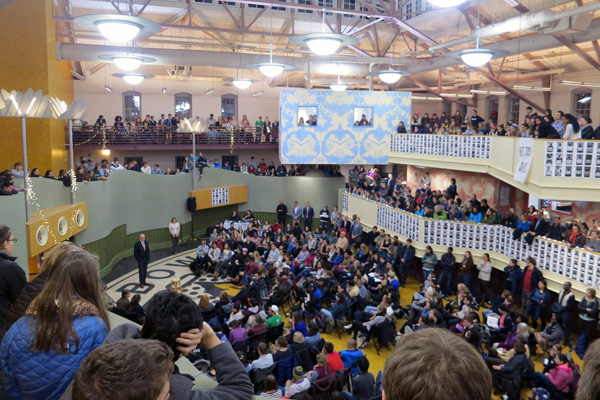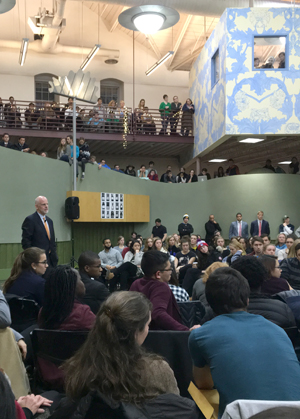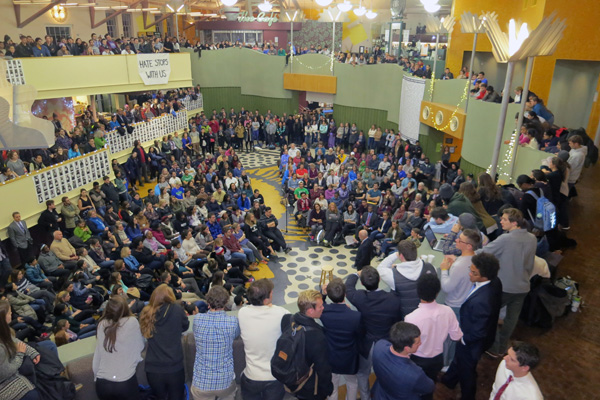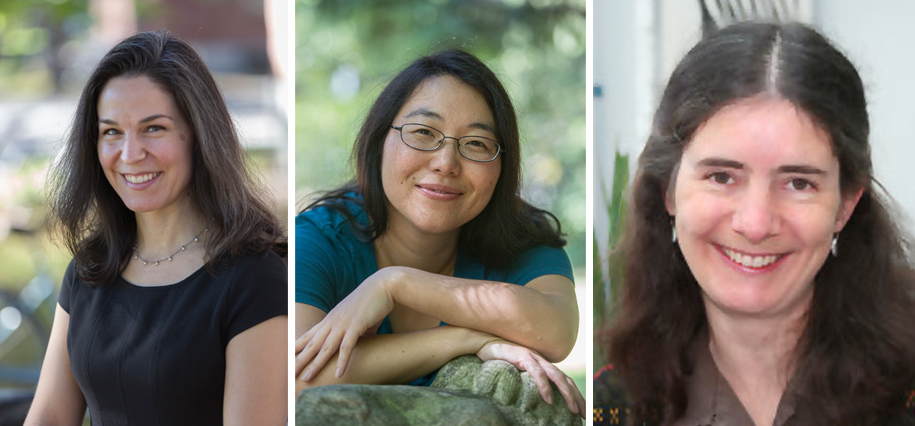President Rose Leads Town Hall Meeting on Issues of Race
By Tom Porter
Issues of race on campus and across the country were front and center Tuesday night when more than 500 students crowded into Smith Union’s Morrell Lounge and onto its balconies for a town hall-style meeting around the topic “Why do issues of race matter if I’m white?”
President Clayton Rose announced the event last week after meeting with members of the College’s multicultural student leadership.
Rose said race is difficult topic—one many people are reluctant to talk about. But it’s important to get over that, he stressed, because “the white majority of our students, faculty, and staff need to better understand why race is an issue.”
Like it or not, he said, we are not in a post-racial society. “The data are incontrovertible. In America the color of our skin affects our life chances, our opportunities, our outcomes, our everyday experiences.”

Stepping aside after brief opening remarks, Rose invited those in attendance to speak up and to ask questions about the topic of race.
One after another, students of varied races and backgrounds took to the microphones in what was a respectful and thoughtful dialogue that drew finger snapping, applause, and an occasional laugh.
Several of the white students who spoke out talked about feelings of guilt and fear—guilt over being white, and fear of saying the wrong thing and being branded a bigot.
They said these concerns often lead to a reluctance to engage more with students of color.
One white male student admitted he makes assumptions when he tries to talk about race with a person of color.
“Often I have an expectation for what they’re going to say, and that impacts the way I’m engaging with them. I kind of shut down part of my analytical mind, and I’m [thinking], ‘Well, they’re going to say this and then I’m going to say that,’ and it’s not genuine.”
The student said he often makes these assumptions even though he knows he shouldn’t because they “hinder the genuineness and the effectiveness of the conversations, and I think I also hinder my own learning about the issues.”
“I think people tend to stick in their own communities” said another. “Maybe we should be exploring new places we haven’t been before.”
This reluctance among many white students to engage more across racial lines does nothing to make students of color feel welcome here at Bowdoin, observed one black female.
Another urged more white students to attend parties held by Bowdoin’s African American Society. “AFAM parties are social spaces and we want as many people as possible to come, it doesn’t matter what you look like or how you dance,” she said.
“If you engage with people who are different from you, you’ll learn so much more than if you engage with people who are similar to you or just like you.”

But students of color also have a role to play in bridging the racial gap, said one young man, who described himself as Latino. Both white students and those of color need to make an effort, he said.
The event lasted 75 minutes but clearly could have gone on much longer. Many of those who spoke described it as an important first step in confronting the issue of race. “This is where it starts,” said one of them. “We need to keep it going.”



